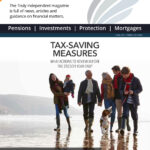Divorce is an emotional and stressful period for those who have to go through it, but it’s important that people realise a pension is a valuable asset in divorce. This is particularly problematic given the average age of divorcees, and it is more likely that a woman will not have any sizeable pension of her own. Previously married couples are at risk of ignoring one of the most valuable assets in divorce settlements, the latest figures from the Family Law Courts show.
Dissolution of marriage
The figures show there were 118,408 petitions filed for dissolution of marriage in 2018, but only 14% contained some sort of pension settlement order. This is despite a recent trend in people getting divorced in later in life. According to the Office for National Statistics, the median age of divorce for men and women has increased by ten years between 1987 and 2017 [1].
As people divorce later, they have less time to build a retirement income if they did not have a pension of their own, meaning dividing this asset is of vital importance to avoid pension poverty. This is a particular issue for women, as 45% of women aged 65 or over have no private pension wealth, separate figures from the ONS show.
When couples divorce, they have different options for how they divide assets between them, including pensions.
The primary methods used for pensions are:
- Offsetting, where the pension assets can be offset against other assets of the divorcing parties
- Pension sharing orders, where pension assets are divided at the time of divorce and there is a clean financial break
- Pension attachment orders, also known as ‘pension earmarking’, where the pension provider of one party pays an agreed amount direct to the former spouse when the pension rights come into payment. This does not represent a clean financial break between the couple and risks the loss of future income for the former spouse if the person with the pension rights dies before retiring or the former spouse remarries
Pension attachment orders
Since 2015, the use of pension attachment orders has increased by 61%, while pension sharing orders have risen by 41%. However, while both types of pension order have increased in popularity, they still represent a relatively small percentage of total divorce cases.
In light of pension freedoms, people with existing pension attachment orders should consider reviewing their agreement and take financial and legal advice as the change in rules brought about by pension freedoms may mean that their attachment order will no provide what was intended.
A fair settlement for all parties involved
Divorcees need to make sure they are receiving professional legal and financial advice before, during and after any divorce case to ensure any settlement is fair for all parties involved. It should not be acceptable for pensions to be ignored, since whilst they might not have an immediate impact, they will do so later in someone’s life. For further information please contact one of our independent financial advisers here.










Follow us